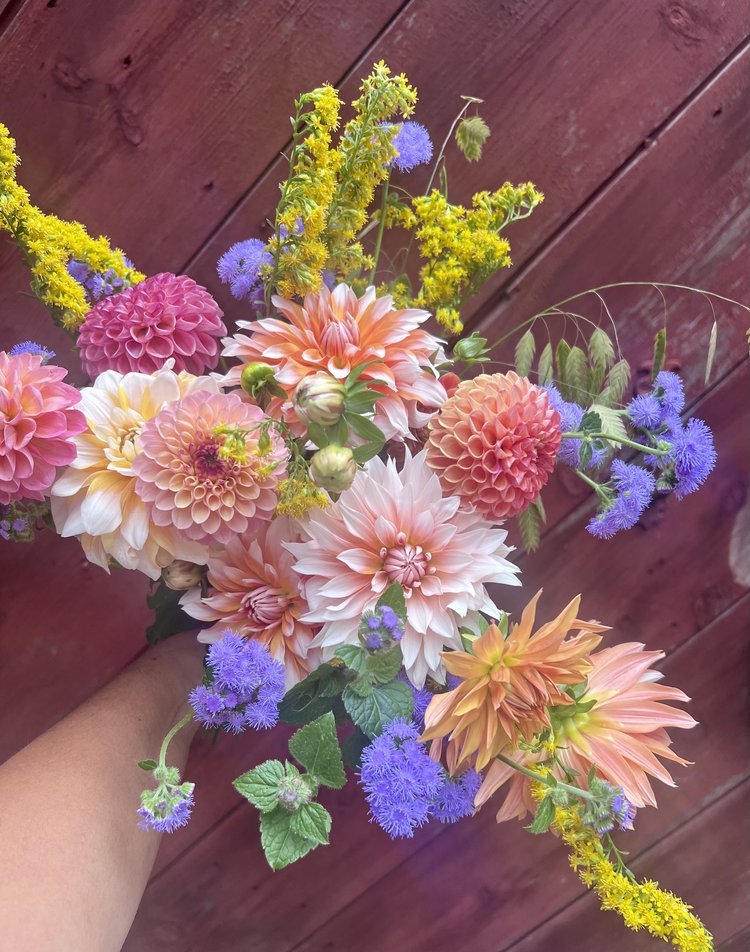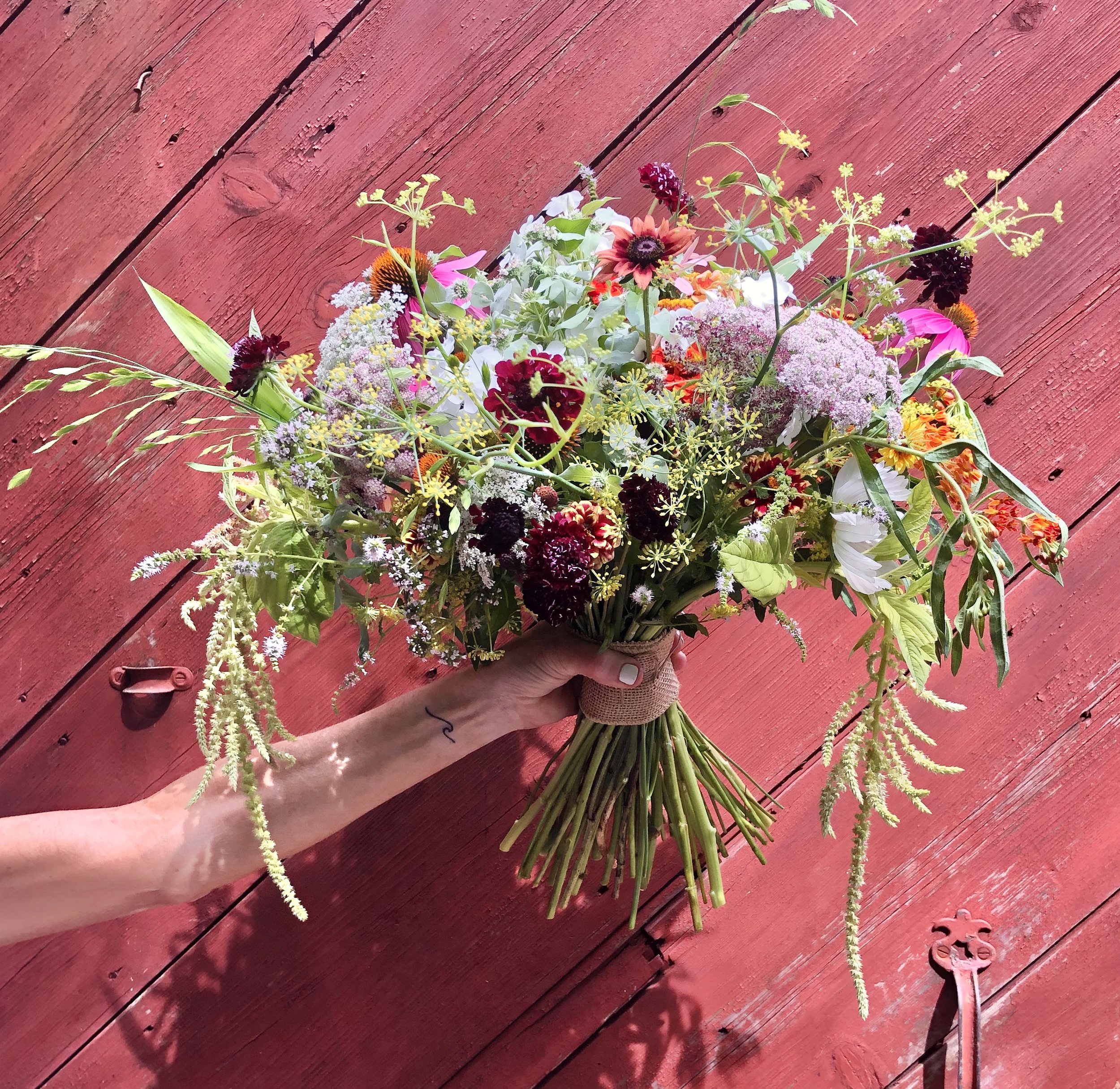DIY Your Spring Florals Using the Golden Ratio
Do you ever wonder why some flower arrangements just feel right? Or why others are off but you just can’t seem to put your finger on why? There’s actually a mathematical reason behind it! It’s called the golden ratio, and it’s a design principle found in nature, art, and architecture. Even if you’re new to flower arranging, you can use this ratio to create beautifully balanced floral arrangements.
Let’s break down how to use this ratio so you can DIY some stunning spring floral arrangements.
What Is the Golden Ratio?
The golden ratio (approximately 1:1.618) is a proportion that naturally appears in everything from seashells and galaxies to the way petals and leaves grow. It’s a formula for visual harmony that the human eye finds naturally pleasing.
You might have seen it represented as a spiral or the Fibonacci sequence, where each number is the sum of the two before it (1, 1, 2, 3, 5, 8, 13, etc.). Many flowers grow in these spirals—think of sunflowers, pinecones, or the way a rose unfurls its petals. This same ratio can be used to arrange flowers in a way that feels organic and visually balanced.
Using the Golden Ratio in Floral Design
Instead of placing flowers randomly, you can use this golden ratio to guide proportions, spacing, and the overall shape of your arrangement. Here’s how:
1. Height Proportion: The 1:1.6 Rule
A simple way to apply the golden ratio is by making the height of your finished arrangement about 1.5 - 1.6 times the height of your vase, or said another way, your vase should occupy one-third of the space and the florals two-thirds.
For example:
If your vase is 8 inches tall, aim for your tallest flower stems to reach 12–14 inches above the rim.
If your container is 6 inches wide, a pleasing floral spread would be around 10-12 inches across.
This proportion keeps your design from looking too short or too top-heavy.
2. Placement: The Off-Center Focal Point
Instead of placing your tallest or most eye-catching bloom dead center, try positioning it slightly off to the side—about one-third of the way across your arrangement (like the golden-colored mum in the picture below). This follows the golden ratio’s spiral pattern, leading the eye through the design naturally.
A good trick:
Place your most dominant bloom (like a large tulip or daffodil) where a line about ⅓ of the way across your container would land.
Build out from there, letting smaller flowers and greenery flow in a curved or spiraling pattern.
3. Layering & Grouping in Fibonacci Numbers
Flowers grow in patterns that reflect the Fibonacci sequence—think of 3 petals on trilliums, 5 on buttercups, or 8 on dahlias. You can use these numbers to guide how you group flowers:
Use 1–3 large focal flowers.
Surround them with 5–8 secondary blooms.
Fill in with smaller groups of 13 or more supporting elements like filler flowers or greenery.
This technique prevents your arrangement from feeling too uniform while maintaining a sense of natural flow.
4. Spiral Stems for Natural Movement
Have you noticed that when professional florists arrange flowers, they often hold stems at an angle rather than straight up? That’s because flowers naturally grow in spirals—again, following the golden ratio!
Try this when arranging your flowers:
Cross stems over each other at a diagonal as you place them in the vase.
Rotate the vase as you go to build a layered, airy structure rather than a stiff, flat bouquet.
This creates a gentle spiral effect, making your arrangement look more dynamic and organic.
Best Spring Flowers for Golden Ratio Arrangements
Focal Flowers (Large/Showy Blooms)
Peonies – Lush, round blooms that provide a strong focal point.
Tulips (Double or Parrot) – Unique shapes add drama and volume.
Ranunculus – Layers of petals create texture and depth.
Garden Roses – Soft, romantic blooms that draw the eye.
Anemones – Dark centers add contrast and focal interest.
Iceland Poppies – Their delicate, papery texture adds a light, airy quality.
Secondary Flowers (Mid-Sized, Supporting Blooms)
Lisianthus – Adds movement and soft, ruffled texture.
Butterfly Ranunculus – Graceful and delicate, perfect for extending the form.
Daffodils (Narcissus varieties) – Especially small-cupped or ruffled varieties for variation.
Fritillaria (Checkered Lily, F. persica) – Unique texture and arching movement.
Lilac – Soft clusters that fill space while maintaining airiness.
Line Flowers (Tall, Flowing Elements for Shape & Structure)
Foxglove (Digitalis) – Vertical spikes add height and elegance.
Delphinium – Adds drama and color gradients.
Snapdragons – Their natural curves help guide the eye.
Allium – Tall, round, and architectural for a striking effect.
Filler Flowers (Small Blooms & Textural Elements)
Sweet Peas – Airy and delicate, perfect for trailing accents.
Spirea – Cascading branches add natural movement.
Hellebores – Soft downward-facing blooms enhance depth.
Waxflower – Tiny blooms provide delicate detail.
Foliage & Wispy Accents
Fern Fronds – Gentle, feathery texture.
Bleeding Heart – Delicate stems with heart-shaped blooms that offer whimsy and movement.
Solomon’s Seal – Graceful arching stems add elegance.
Flowering Branches (Forsythia, Cherry, Apple, or Dogwood) – Adds seasonal structure.
Clematis Vines – Delicate, trailing movement enhances the spiral effect.
Bringing It All Together
The golden ratio isn’t just a math concept—it’s nature’s way of creating beauty and balance. By following its principles, you’ll find that your flower arrangements feel more natural, harmonious, and effortless.
So the next time you bring home fresh spring flowers, or harvest them from your own garden, try applying these simple golden ratio techniques. With a little practice, you’ll be designing arrangements that look like they came straight from a professional florist!
Want to watch me design a spring bouquet using the golden ratio? Click to watch the YouTube video below!









